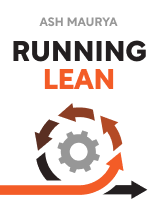

This article is an excerpt from the Shortform book guide to "Running Lean" by Ash Maurya. Shortform has the world's best summaries and analyses of books you should be reading.
Like this article? Sign up for a free trial here.
How do you use an early adopters model in marketing? What are early adopters, and why should you target them?
An early adopters model focuses on gathering interest from people who are likely to try a new product and influence the initial growth of your company. This is a key part of growing your business, and though you can shift focus later on, focusing on early adopters marketing at first is a good strategy.
Continue reading to learn how to build an early adopters model and how to use it in marketing.
What Is an Early Adopter?
While it’s logical to differentiate between paying customers and non-paying customers (it helps identify your revenue sources), you might be curious about why you should focus on early adopters in your marketing strategy. Research sheds light on how early adopters play a pivotal role in shaping a new offer’s development and mainstream adoption.
When a new product or service emerges, it’s categorized as an innovation. Innovations generally undergo an adoption process before they’re embraced by the mainstream market. Geoffrey Moore (Crossing the Chasm) developed the “Technology Adoption Life Cycle” to illustrate this process. According to him, the market for any innovation is made up of five groups of people who become interested in the offer at different stages of its development:
1. “Techies” or “Innovators” love new technology for its own sake. They buy new products just to try them out and are happy to tinker with things to make them work.
2. “Early Adopters” or “Visionaries” see emerging technologies as opportunities to gain revolutionary capabilities before anyone else does. Crucially, they act as pioneers, offering invaluable feedback for innovation refinement. As the innovation gains traction among them, it garners credibility and attracts subsequent customer segments.
3. The “Early Majority” or “Pragmatists” hope to benefit by keeping up with the state of the art, but they only buy proven products from reputable companies.
4. The “Late Majority” or “Conservatives” don’t care about keeping up with the latest developments, but they don’t want to be left behind either. They tend to value simplicity, convenience, and affordability over performance.
5. The “Laggards” or “Skeptics” are innately skeptical of anything new. They avoid new technology whenever possible.
In essence, early adopters serve as catalysts, propelling innovations toward mainstream acceptance. By strategically targeting them, you leverage their influence to pave the way for broader adoption.
Using an Early Adopters Model: First Steps
Now that you understand what an early adopter is and how they fit into your understanding of customer needs, it’s time to break down the steps needed to successfully market to early adopters.
Step 1: Define Customer Problems
Hypothesize the top three customer problems to address that will attract and satisfy your target customer group. Maurya recommends that you list the existing alternatives customers use to address those problems and identify the issues they encounter while using these alternatives.
(Shortform note: An effective way to identify customer problems is to use existing alternatives yourself. This practice immerses you in the user experience, offering firsthand insights into their challenges and frustrations. For example, you might ask your team members to try out the most popular productivity apps that professional teams currently use and take note of the issues they experience.)
Step 2: Develop Possible Solutions
Hypothesize the solutions that will effectively address your target customer group’s problems. Maurya says that you should focus on the simplest thing that effectively addresses the problem in an early adopters model.
(Shortform note: The idea that the simplest solution is often the best one can be attributed to Occam’s razor: a philosophical principle that suggests choosing the simplest explanation or solution to effectively explain a phenomenon or solve a problem. In terms of product development, this means you should eliminate extraneous features and hone in on the core functionalities required to tackle each distinct problem. This approach ensures that the resulting solution remains uncluttered, direct, and aligned with user needs.)
Step 3: Consider Your Value Offer
Hypothesize how your solution offers unique value and why it will resonate with your target customer group. Maurya points out that you should explicitly connect your offer’s value to the primary problem you aim to solve for your customers.
Step 4: Define Touchpoints
Hypothesize the communication and delivery touchpoints through which you’ll interact with your customers and provide your products or services. Maurya suggests that you identify touchpoints that can handle increased demand and accommodate future growth so that you can start building and testing them alongside your offer.
Step 5: Set Target Profit Sources
Hypothesize how you intend to generate a profit and the prices that your target customer groups will pay. Maurya emphasizes the importance of setting prices early on, as it influences the customer groups you’ll attract.
Validating Your Business Using an Early Adopters Model
Once you’ve identified the problem to address and have updated your potential solution, your next objective is to validate this solution with your early adopters. Maurya explains that this validation process ensures that your offer effectively solves your customer group’s problems while aligning with their preferences—which, in turn, guarantees demand for your product or service.
He suggests the following four-step process for validating your solution with an early adopters model:
1) Create a Prototype
Maurya suggests that you create a prototype that showcases your solution’s features to help early adopters visualize its functionality. A key part of an early adopters model is developing a functional prototype at the early stages of your development process.
2) Present Your Prototype to Early Adopters
Next, Maurya recommends that you present your prototype to early adopters and gather feedback. This feedback should include their overall impression of your solution, its effectiveness in addressing their problems, and their willingness to pay the price you set for it.
3) Refine Your Solution and Pricing Model
Refine your solution and pricing model to accommodate the feedback you receive. Maurya advises that you repeat the first two steps until you feel confident that your solution includes the essential features your early adopters want, and that your pricing aligns with their expectations and willingness to pay.
4) Obtain Commitments From Your Early Adopters
Maurya suggests that you obtain commitments from your early adopters to confirm market demand for your offer. These commitments can take the form of pre-orders, signed letters of intent, or agreements to participate in beta testing.
| Practical Strategies for Securing Early Adopters’ Commitments Experts suggest several practical strategies for securing commitments for your offer: 1. Ensure clear terms and expectations: This will provide early adopters with a clear understanding of their commitment and the benefits they’ll gain. For example, outline exactly what they’ll receive upon commitment and how the process will unfold. 2. Create urgency with time-limited incentives: This can encourage early adopters to take action sooner rather than later. For example, offer an early-bird discount or exclusive bonus for commitments made within a specified time frame. 3. Cater to various commitment preferences: This involves accommodating their individual comfort and inclinations. For example, some may feel at ease with pre-orders, while others may lean towards participation in beta testing. 4. Cultivate relationships: This will help build trust and rapport, making early adopters more willing to commit to your offer. For example, establish regular personalized interactions and seek their feedback to create a sense of partnership. 5. Showcase benefits: This can highlight the unique advantages early adopters will enjoy through their commitment, providing additional motivation for them to commit. For example, emphasize exclusive features or early access to new updates. 6. Offer a cancellation policy: This will help reassure early adopters that their commitment is reversible, alleviating any concerns they may have. For example, offer a flexible 30-day cancellation policy within which they can back out of the agreement. |

———End of Preview———
Like what you just read? Read the rest of the world's best book summary and analysis of Ash Maurya's "Running Lean" at Shortform.
Here's what you'll find in our full Running Lean summary:
- The reason why so many business models fail
- Why you should never assume you know what your customers want
- Why your business should be built on continuous validation and iteration






